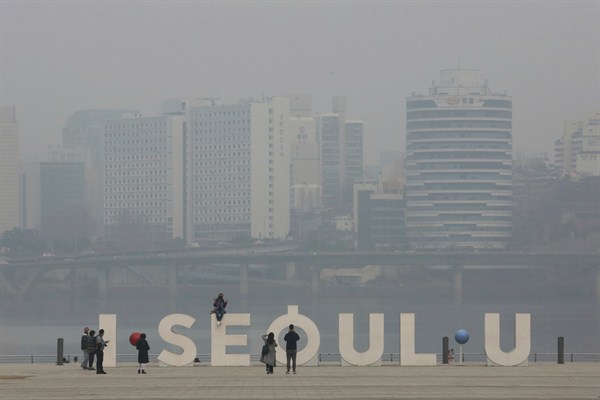SEOUL—Most of the time, the existential issue of North Korea dominates dialogue between South Korea and its major allies and neighbors. But as I found out on a recent trip to Seoul, this fast-changing and dynamic society is beginning to see climate and environmental hazards as real priorities, too. As South Korea establishes its place as a G-20 developed economy and looks for ways to take on more responsibility in global governance, the tough tradeoffs between its economic growth and its adaptation to climate realities are becoming clearer. South Korean leaders are beginning to recognize that they need to do more.
In the world of climate politics, South Korea sits in an uncomfortable place. It is still considered a developing country, by the terms created more than 30 years ago by the Intergovernmental Panel on Climate Change, when intergovernmental meetings to coordinate climate action were just swinging into gear. Back then, South Korea was not yet a member of the OECD. It is now in the top 20 performers in the world in terms of economic clout—and in terms of carbon emissions. One recent assessment placed South Korea as the 9th-largest carbon emitter in the world, driven by its use of fossil fuels and gas flaring at its many industrial plants.
At the same time, South Korea has worked to be a good global citizen in climate governance. The city of Incheon, next to Seoul, now hosts the Green Climate Fund, an international financing vehicle created less than a decade ago to invest in smart climate action in developing countries and encourage the private sector to see investment opportunities in clean energy. The Global Green Growth Institute, based in Seoul, began as a nongovernmental organization dispensing technical advice and economic development strategies for climate stressed developing countries. It is now an intergovernmental organization with 33 members, working on planning, finance and support to help countries make climate choices that align with the United Nations Sustainable Development Goals, which include “affordable and clean energy” and “climate action.”

